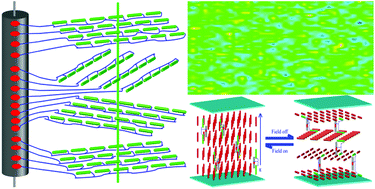Chiral surfactants for dispersing carbon nanotubes†
Abstract
A novel and effective way to disperse carbon nanotubes (CNTs) by using amphiphilic chiral side-chain liquid crystalline oligomers (ACSLCOs) as chiral surfactants, which possess dual affinity for both CNTs and chiral liquid crystals (CLCs), is reported here for the first time. For the binary system consisting of CNTs and ACSLCOs, the concentration of CNTs dispersed by ACSLCOs was determined by Fourier transform infrared (FTIR) spectroscopy combined with ultraviolet-visible-near infrared spectroscopy. The ability to disperse CNTs increases as the mole fraction of polycyclic conjugated structures on the chiral surfactants increases, and the concentration reaches 0.85 mg mL−1. The dispersion state of the CNTs in the composites was characterized by a FTIR imaging system, and the CNT–O7 composite demonstrated the best dispersion of CNTs. The evenly dispersed CNTs reduce the glass transition temperature and improve the thermal stability of the ACSLCOs. For the ternary system consisting of CNTs, O7 and a low molecular weight CLC, the dispersion state of the CNTs was characterized using a polarized optical microscope. The results show that the CNTs possess excellent compatibility with the low molecular weight CLCs with the assistance of O7. The dispersed CNTs are proven to have increased the chiral stability of the chiral host by the measurement of the Bragg selective reflection.


 Please wait while we load your content...
Please wait while we load your content...